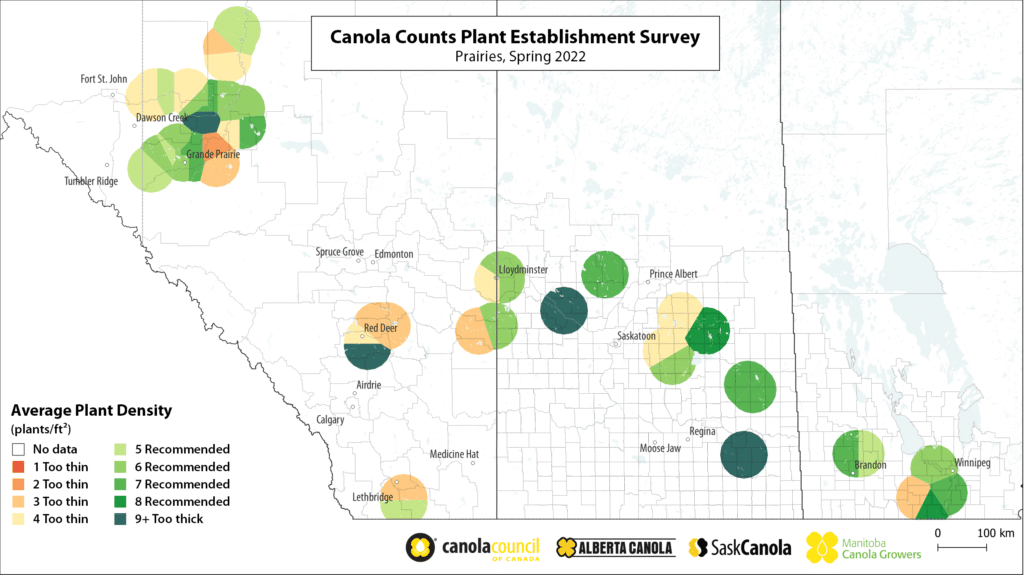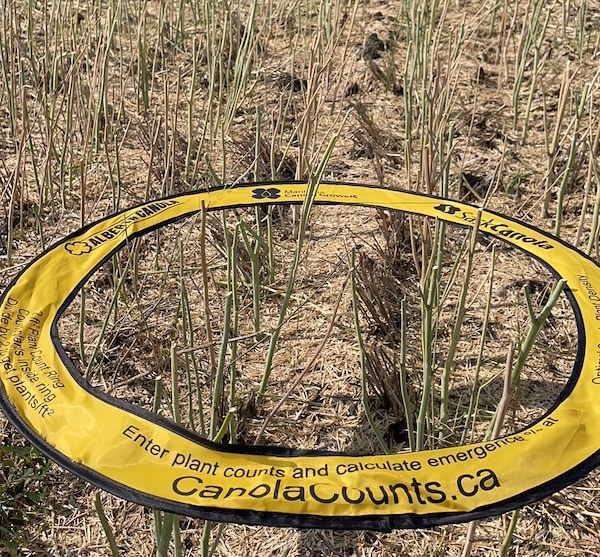Use the Canola Counts tool, selecting the ‘Post-harvest (fall)’ timing option, to count stems to assess the average plant population for each canola field. These counts put yield and quality in perspective, which will help with seeding rate decisions next year. Also check for uniformity across fields, and try to figure out reasons for poor uniformity.
By collecting a few years’ worth of plant stand data and cross referencing it with seeding rates, yield, grade and maturity data for each field, farms can determine their own optimum target stand. Profit and risk are best optimized with canola plant densities of 50-80 plants per square metre (five to eight per square foot). Growers may discover that in some situations, 50 plants per square metre (five per square foot) is a suitable target while in other situations (weedier fields, shorter growing season, etc.), 70-80 plants per square metre (seven to eight per square foot) is more appropriate.
Although lower plant densities may reach yield targets in some years, thin stands cause a decline in yield stability and predictability. Thinner stands will produce branchier plants that take longer to mature, leading to later harvests and an increased risk of fall frost that can lock in green seed.

Compare harvest counts to your spring emergence counts and to the Prairie emergence and density maps. Canola plant counts can drop 10 to 15 per cent through the season. If plant density declines throughout the season, check scouting notes and consider the most likely reasons – self-thinning due to high plant density? insects? weather? disease? – and whether there’s a profit-improving way to prevent this. Seed choice may be part of the solution.
Want a Canola Counts plant density ring to take stem counts? Contact dicksont@canolacouncil.org for one, while supply lasts.
Further reading:
- The Canola Watch ‘How to count plants (and reasons for low numbers)‘ article for tips on how to take accurate counts
- Check out the fall Canola Digest article: ‘Was your canola stand good enough‘ to assess if you hit your target stand

